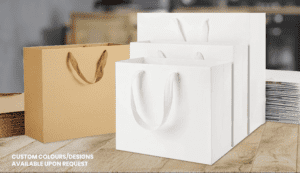Catering businesses have to deal with a lot of waste on a daily basis, from food scraps to disposable packaging. While it may be convenient to use single-use plastics, these products are not eco-friendly and are causing harm to the environment. Therefore, it is essential for catering businesses to start looking for alternative options for food packaging. In this article, we will guide you on how to choose eco-friendly disposable food packaging for your catering business.
What is eco-friendly food packaging?
Eco-friendly food packaging is any packaging material that has a minimal impact on the environment. It is made from sustainable and renewable materials that are biodegradable, compostable, or recyclable. These materials break down easily and do not contribute to the increasing amount of waste in landfills.
Materials to consider for eco-friendly food packaging
Here are some of the most common materials used in eco-friendly food packaging:
1. Bioplastics
Bioplastics are made from renewable materials such as cornstarch, sugarcane, and vegetable oil. They are compostable and biodegradable, which means they will break down into organic matter over time. Bioplastics are a great alternative to traditional plastics, but they still require a significant amount of resources to produce and may not be the most sustainable option.
2. Paper and cardboard
Paper and cardboard are excellent choices for eco-friendly food packaging. They are made from renewable resources and can be recycled and composted. Plus, they are relatively affordable and widely available.
3. Bagasse
Bagasse is a byproduct of sugarcane processing and is an excellent material for food packaging. It is sturdy, lightweight, and compostable. It can also be used for hot and cold food items.
4. Bamboo
Bamboo is another sustainable material that is being used for food packaging. It is lightweight, durable, and biodegradable. Plus, bamboo grows quickly, making it a sustainable option for businesses looking to reduce their environmental impact.
5. Seaweed
Seaweed is a new and innovative material that is becoming increasingly popular for food packaging. It is biodegradable and compostable and can be used for a variety of food items.
Considerations for choosing eco-friendly food packaging
When choosing eco-friendly food packaging, there are a few things to consider:
1. Functionality
The packaging should be suitable for the food item it contains. For instance, hot food items should be packed in materials that can withstand high temperatures.
2. Durability
The packaging should be sturdy enough to hold the food item without breaking or leaking.
3. Cost
Eco-friendly food packaging can be more expensive than traditional packaging. Caterers should choose packaging that fits within their budget.
4. Branding
Packaging can also be an opportunity for branding. Caterers should choose packaging that fits their brand and communicates their values.
Where to find eco-friendly food packaging
Here are some places to look for eco-friendly food packaging:
1. Online retailers
Online retailers such as Eco-Products, Green Paper Products, and World Centric offer a wide variety of eco-friendly food packaging options.
2. Local distributors
Many local distributors now carry eco-friendly food packaging. Caterers should look for distributors that specialize in sustainable products.
3. Foodservice suppliers
Food service suppliers are also a great option to find eco-friendly food packaging. These suppliers often carry a range of packaging options, including those made from sustainable materials.
Labeling and certifications
When choosing eco-friendly food packaging, it is important to look for products that have been certified by recognized organizations. These certifications ensure that the product has met specific environmental standards and is a genuinely sustainable option. Some common certifications to look for include:
1. Compostable
Compostable products are certified to break down into organic matter in a composting facility. Look for products that have been certified by the Biodegradable Products Institute (BPI) or the Composting Council.
2. Recyclable
Recyclable products can be broken down and turned into new products. Look for products that have been certified by the Sustainable Forestry Initiative (SFI) or the Forest Stewardship Council (FSC).
3. Biodegradable
Biodegradable products are designed to break down into natural materials over time. Look for products that have been certified by the ASTM International or the International Organization for Standardization (ISO).
Implementing eco-friendly food packaging in your business
Implementing eco-friendly food packaging in your catering business is a great step towards sustainability. However, it is important to ensure that your customers are aware of your efforts and understand the importance of using eco-friendly products. Here are some tips to help you make the transition:
1. Communicate your efforts
Let your customers know that you are using eco-friendly packaging and explain why it is important. Use signage or packaging labels to educate your customers on the environmental benefits of using eco-friendly products.
2. Offer incentives
Encourage your customers to make sustainable choices by offering incentives for using eco-friendly packaging. For example, you could offer a discount on future orders for customers who bring their own reusable containers.
3. Train your staff
Make sure your staff is trained on the importance of using eco-friendly packaging and how to properly dispose of it. This will help ensure that your business is truly making a positive impact on the environment.
Conclusion
Switching to eco-friendly food packaging is a small but important step towards reducing your catering business’s impact on the environment. By choosing materials that are renewable, compostable, or recyclable, you can help reduce the amount of waste that ends up in landfills. Consider the materials, functionality, durability, cost, branding, and certifications when choosing eco-friendly food packaging. With some effort and education, you can help make a positive impact on the environment while also maintaining the quality of your catering business.


